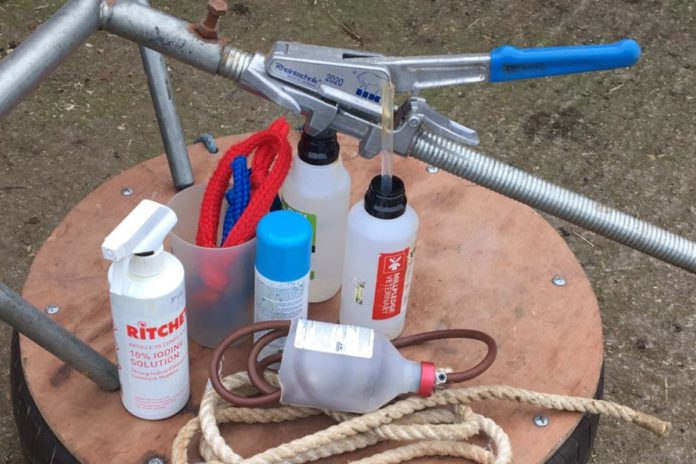The 10 Do-Nots of Calving Cows
In this week’s Farm Vet Corner, That’s Farming editor, Catherina Cunnane, speaks to a farm vet who provides some tips on what you should not do during a calving case.
- Do not rush in too early/intervene too late – A common mistake is to intervene too early or, possibly, too late, so timing and patience are key. This news article on That’s Farming explores when you should possibly intervene if a calving case is not progressing normally/at a satisfactory rate.
- Do not handle a cow without wearing arm-length gloves – As quoted previously in this news article on That’s Farming, “Do not handle cows without calving gloves, as there is a risk of septicaemia and/or you could contract zoonotic diseases.” In another article, we quoted: “Using a bare arm not only puts the cow at risk for infection but also puts the palpator [you] at risk of contracting disease pathogens from the cow.”
- Do not ignore the ‘rules of 3’ when it comes to calving cows – This, as defined by the Beef Research Council in this news article, means you should only attempt to deliver a calf when you have either two front legs and a head – anterior (normal position) or two hind legs and a tail – posterior (backwards) position
- Do not overestimate your limits, that of your heifer/cow and your calving jack/aid – “A lack of progress may indicate that something is wrong, but handling a cow, as outlined above, is instrumental in identifying potential issues. For example, a uterine torsion, known as a twisted calf bed (clockwise or anti-clockwise) in layman’s terms, can be a possibility if a calving is not progressing, but it can be multi-factorial. When handling your cow, identify your calf positioning and size. When handling your cow, ensure you restrain them securely and that you do not put yourself in danger. If the calf is too big, if you suspect a twisted calf bed or positioned incorrectly (crossed feet: X means stop), and you cannot correct it within a circa 10-minute period, call your vet.
- Do not hesitate to contact your vet to seek their expertise, advice and possible intervention – Help is only a phone call away
- Do not work against the cow’s contractions – take the slack off the cow and let the cow/heifer do the work;
- Do not improperly utilise/deploy your calving jack/aid – Use the seesaw method with your calving aid/jack and take care when operating. Remember that a calving jack/aid is designed to enable you to assist with the delivery of a calf and is not to be used as a winch to drag a calf out by the use of excessive force, which can cause damage to both the cow and the calf.
- Do not underestimate the benefit of a calving gate – “A calving gate is the single most important piece of equipment on a suckler or dairy farm.” The vet explained to editor, Catherina Cunnane, that calving gates are becoming more popular on farms in recent years, and they are no longer viewed as “a luxury item” on a specialised pedigree enterprise. They commented: “A calving gate is a win-win all around as it leaves everything safer and more stress-free for the farmer, vet (if required) and the cow. Some vets will charge an additional fee, often in the region of circa €50-€100, for having to perform a C-section on a cow on a farm without a calving gate.”
- Do not alter the pre-positioned knots on calving ropes – “They are placed strategically to provide optimum traction to aid in the delivery of the calf.”
- Do not hang a calf over a gate or swing it – This has been something people have done traditionally because you end up getting fluid that drains out of the calf’s mouth, as this news article highlights. Unfortunately, this fluid is not coming from the lungs like people always believed. It is actually mostly coming from the stomach, so it is not achieving what we think it is. Gravity is then pushing the abdominal content, so the intestines of the calf, down against the diaphragm, actually making it harder for those lungs to expand. Put the calf in the calf recovery position instead.
Note: The contents of this news article are not a substitute for professional advice and are compiled on the basis of informing farmers – always consult and seek the expertise of your veterinary practitioner.
Other farming news articles on That’s Farming:
- ‘Give cows adequate time to calve and know your limits’ – vet on calving
- ‘Avoid calving a cow in a crush; opt for a calving gate in a calving pen instead’ – vet
- ‘Every farmer should have a calving jack’ – vet on 20 essential items for calving 2023
See more articles from farming journalist, Catherina Cunnane





